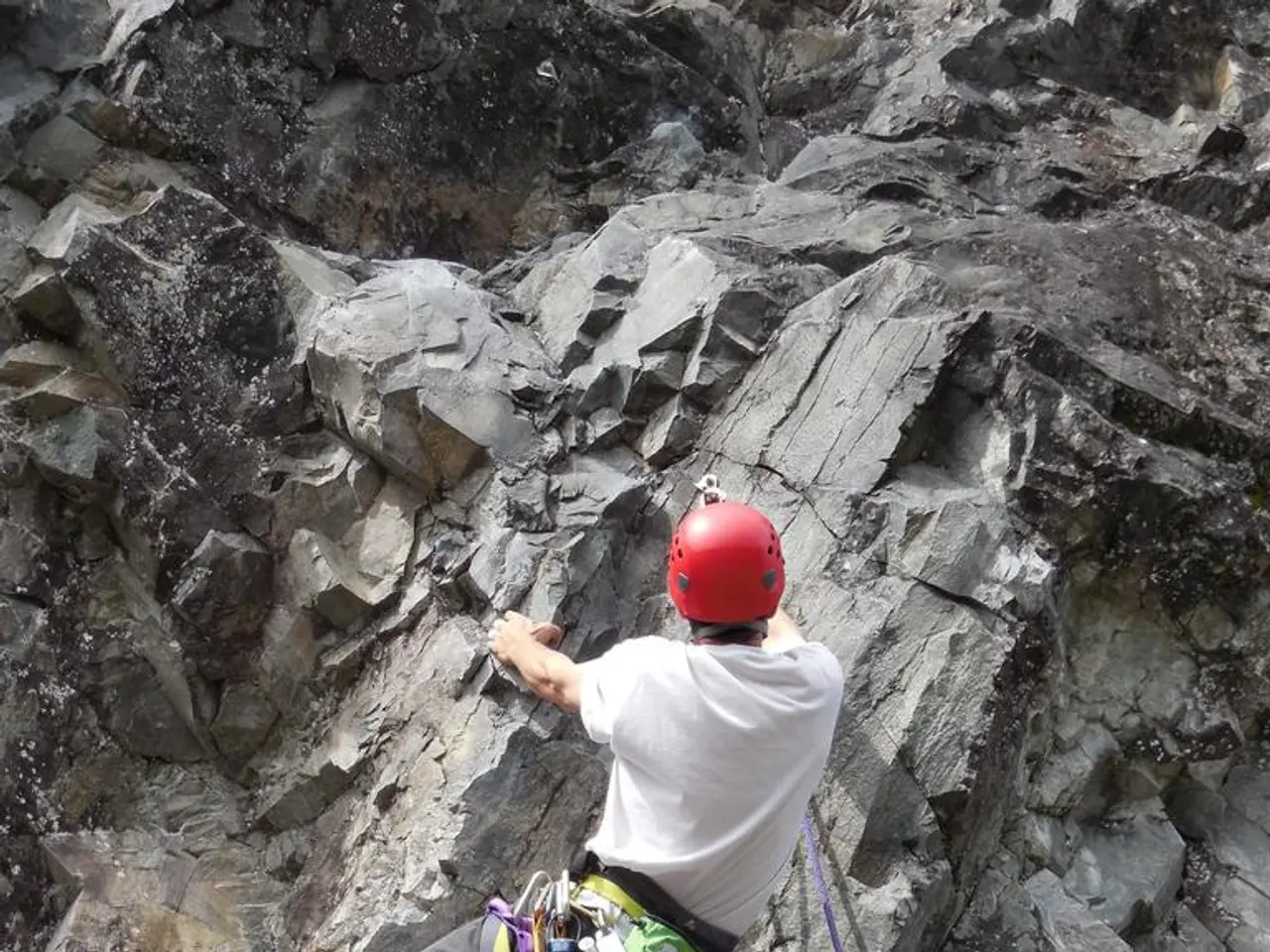Exhilarating Adventures on Lofty Peaks: Ascents for the Brave
Mountain climbing is more than just scaling peaks; it fosters personal growth and environmental awareness. For those new to the sport, here are some essential tips to ensure a safe and enjoyable experience.
Essential Equipment and Safety Gear
Proper clothing for alpine climbing includes moisture-wicking base layers, insulated mid-layers, and windproof shells. Essential safety equipment includes helmets, harnesses, and layered clothing systems. Emergency gear should be stashed where it can be grabbed quickly.
Essential technical climbing gear includes a climbing harness, helmet, carabiners, ice axes, and an avalanche probe. For snow and ice routes, a crevasse rescue kit is essential.
Safety Protocols for Beginners
Learning and carrying basic first-aid skills and kits, including CPR and bleeding control techniques, is crucial. Informing someone reliable about your itinerary and expected return time facilitates rescue if needed.
Understanding trail conditions, weather patterns, and navigation skills is also vital. Planning ahead by researching route conditions, avalanche risks, weather forecasts, and local regulations is essential.
Following mountain climbing etiquette such as "leave no trace" principles by packing out all trash and respecting other climbers and the environment preserves trails. Staying hydrated and avoiding alcohol or caffeine before and during the climb helps prevent dehydration and altitude sickness.
Acclimatizing properly before ascending reduces the risk of altitude sickness. Choosing appropriate routes and campsites that suit the team’s experience and minimize environmental impact is also important.
Preparation and Training
Gradually ascend to higher elevations over days to prepare for altitude sickness. Consult a trainer or physician if new to high-altitude activities. Aerobic efficiency is key in mountain climbing preparation.
Mix long hikes with a weighted backpack, strength training for core and legs, and yoga for flexibility to prepare for multi-day expeditions. Route selection and planning require studying elevation profiles and recent trip reports to spot potential challenges.
Pack weight should be distributed wisely, with the waist belt tightened to shift load to the hips. Simulate uneven terrain with stair workouts or sand dunes when training for multi-day expeditions.
Climbing Techniques
Practice safe climbing techniques such as keeping balance, taking switchbacks on steep slopes, and using proper grip on snow or rocky terrain. Avoid exposed ridges during storms and plan climbs early in the day when snowpack is stable.
Choosing Your Adventure
Beginners might try guided glacier hikes, while experienced climbers can tackle granite walls. Research guides like "Freedom of the Hills" for terrain tips when choosing between glacier travel and rock faces.
Group expeditions strengthen teamwork and communication skills. Identifying key landmarks helps navigation when fog rolls in or trails fade.
Modern Mountain Climbing
Modern safety gear has expanded accessibility for beginners. Carry a GPS device like a Garmin InReach, a first-aid kit, and layered clothing from brands like The North Face for changing conditions.
Modern apps overlay real-time weather onto classic routes, but always carry a physical backup. High-altitude adventures demand respect for thin air and acclimatization.
Alpine climbing requires boots that fit well and are half a size larger than usual for thick socks and swelling feet. Opt for stiff-soled boots like La Sportiva Nepal Cubes for support on rocky or icy terrain.
Pair boots with moisture-wicking socks and gaiters to keep debris out in technical environments. The best adventurers adapt when routes shift, as flexibility becomes your greatest tool in wild areas.
Over 25 million people worldwide attempt mountain climbing annually. Whether you're a beginner or an experienced climber, remember to always plan escape paths and discuss alternatives with your team, and enjoy the thrill of conquering new heights!
After each mountain climbing experience, personal growth can be achieved by analyzing and applying the wisdom gained from challenges encountered. To harness this growth in sports and positively impact personal development, follow safety protocols, prepare adequately, and practice climbing techniques responsibly.








